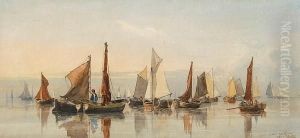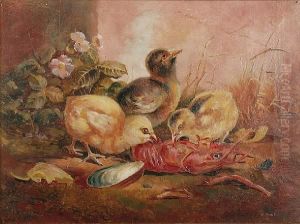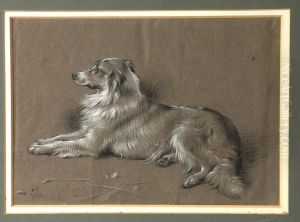W.H. Hunt Paintings
William Holman Hunt was a pivotal figure in the Pre-Raphaelite Brotherhood, an artistic movement that emerged in the mid-19th century in Britain. Born on April 2, 1790, in London, England, Hunt's work is distinguished by its meticulous attention to detail, vibrant colors, and incorporation of complex religious and moral themes. His commitment to painting with a high degree of realism and truth to nature was a reaction against the academic standards of the time, which he and his fellow Pre-Raphaelites perceived as formulaic and lacking in depth.
Hunt's early life was marked by a determination to pursue an artistic career, despite his family's financial struggles and lack of support for his ambitions. He enrolled at the Royal Academy schools in 1844, where he met John Everett Millais and Dante Gabriel Rossetti. Together, they formed the Pre-Raphaelite Brotherhood in 1848, seeking to revitalize art by rejecting mannerist influences that had dominated since the High Renaissance. They advocated for a return to the detail, color, and complexity of late medieval and early Renaissance art, before the time of Raphael.
Throughout his career, Hunt produced a number of works that are considered masterpieces of the Pre-Raphaelite movement. One of his most famous paintings, 'The Light of the World' (1851-1853), exemplifies his religious convictions and his meticulous approach to natural detail. This painting, depicting Christ knocking on an overgrown and unopened door, symbolizes Christ's attempt to enter the human soul. It became immensely popular in Victorian England and remains an iconic image of the era.
Hunt's travels to the Holy Land in the mid-1850s deepened his religious beliefs and influenced his art, leading to a focus on biblical themes with an emphasis on realism and historical accuracy. His experiences in the Middle East allowed him to paint biblical scenes and landscapes with authentic details, setting a new standard for religious art.
Despite facing criticism and financial difficulties throughout his career, Hunt's work was influential in the development of British art, and his legacy is closely associated with the ideals of the Pre-Raphaelite Brotherhood. He continued to paint and exhibit his work until his health declined. William Holman Hunt died on September 7, 1864, leaving behind a body of work that continues to be celebrated for its beauty, complexity, and devotion to truth and nature.


